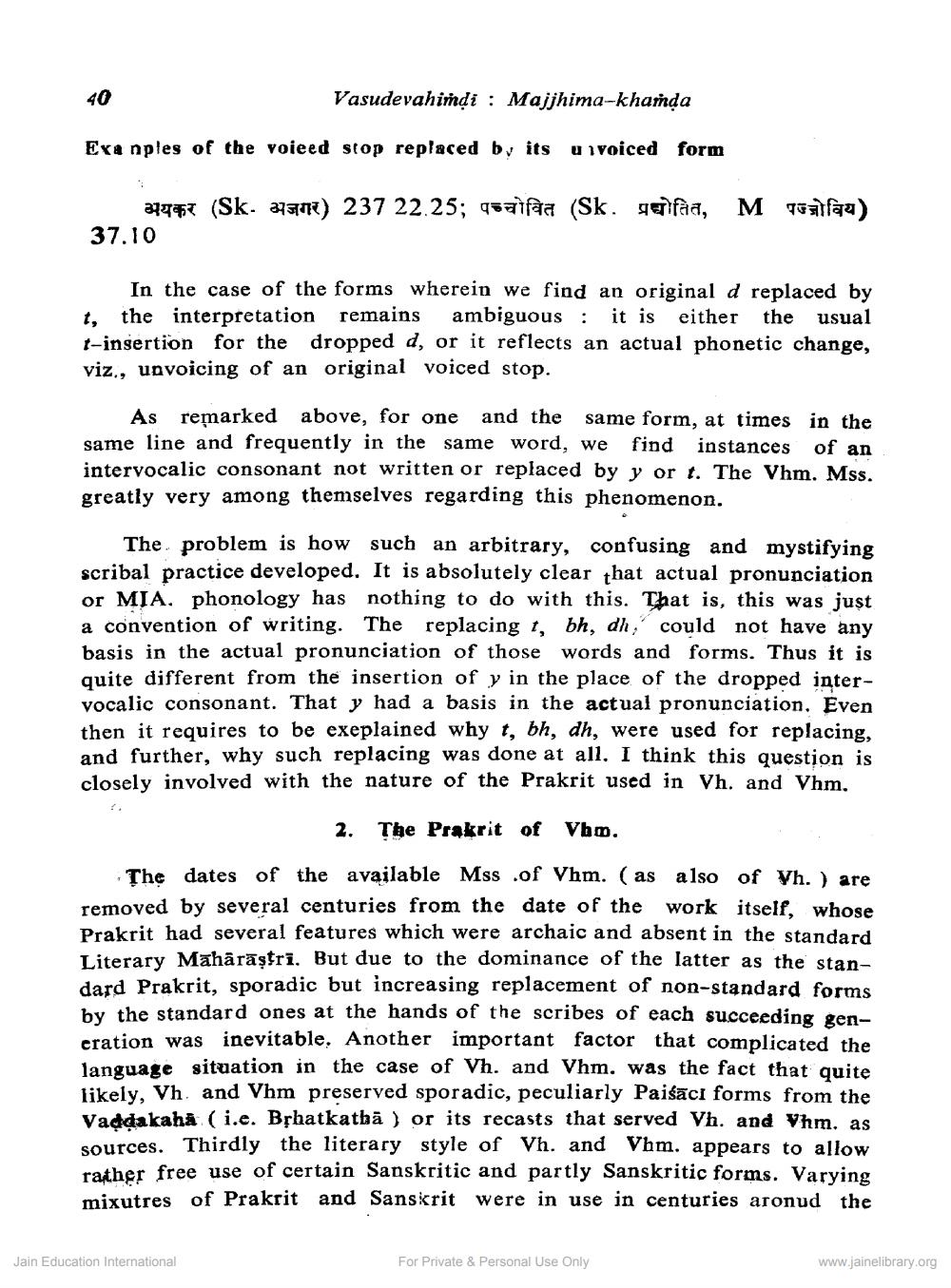________________
40
Vasudevahindi : Majjhima-khamda
Exa nples of the voiced stop replaced by its u voiced form
27747 (Sk. 347117) 237 22.25; salfa (Sk. gefàa, 37.10
M
vallaa)
In the case of the forms wherein we find an original d replaced by 1, the interpretation remains ambiguous : it is either the usual t-insertion for the dropped d, or it reflects an actual phonetic change, viz., unvoicing of an original voiced stop.
As remarked above, for one and the same form, at times in the same line and frequently in the same word, we find instances of an intervocalic consonant not written or replaced by y or t. The Vhm. Mss. greatly very among themselves regarding this phenomenon.
The problem is how such an arbitrary, confusing and mystifying scribal practice developed. It is absolutely clear that actual pronunciation or MỊA. phonology has nothing to do with this. That is, this was just a convention of writing. The replacing 1, bh, dh,' could not have any basis in the actual pronunciation of those words and forms. Thus it is quite different from the insertion of y in the place of the dropped intervocalic consonant. That y had a basis in the actual pronunciation. Even then it requires to be exeplained why t, bh, dh, were used for replacing, and further, why such replacing was done at all. I think this question is closely involved with the nature of the Prakrit used in Vh. and Vhm.
2.
The Prakrit of Vhm.
The dates of the available Mss .of Vhm. (as also of Vh.) are removed by several centuries from the date of the work itself, whose Prakrit had several features which were archaic and absent in the standard Literary Māhārāştri. But due to the dominance of the latter as the standard Prakrit, sporadic but increasing replacement of non-standard forms by the standard ones at the hands of the scribes of each succeeding gen
ration was inevitable. Another important factor that complicated the language situation in the case of Vh. and Vhm. was the fact that quite likely, Vh and Vhm preserved sporadic, peculiarly Paišācr forms from the Vaddakahā (i.e. Bșhatkatbā ) or its recasts that served Vh. and Vhm. as sources. Thirdly the literary style of Vh. and Vhm. appears to allow
other free use of certain Sanskritic and partly Sanskritic forms. Varying mixutres of Prakrit and Sanskrit were in use in centuries aronud the
Jain Education International
For Private & Personal Use Only
www.jainelibrary.org




